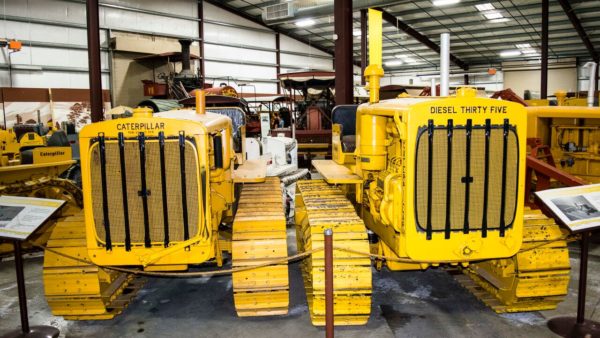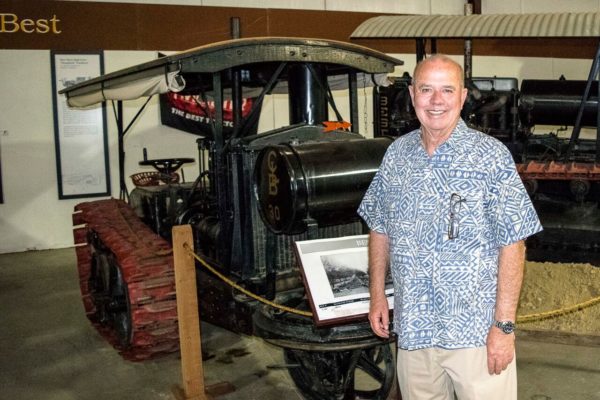Antique Tractors
Contributed by Steve Beckley
 Tractors have always been part of my life as a farm kid. The first vehicle I learned to drive was a Ford tractor. One of my favorite places to visit in my home community of Woodland is the California Agriculture Museum, formerly the Heidrick Ag History Center, which houses more than 100 antique tractors, many from the collection of Fred Heidrick Sr.
Tractors have always been part of my life as a farm kid. The first vehicle I learned to drive was a Ford tractor. One of my favorite places to visit in my home community of Woodland is the California Agriculture Museum, formerly the Heidrick Ag History Center, which houses more than 100 antique tractors, many from the collection of Fred Heidrick Sr.
The tractors and other farm equipment on display date from the 1800s, to mid 20th century. One display that I am drawn to is the Harris Giant Harvester, which took 5 people to operate, including the tractor driver. This harvester has a 21-foot header, operated in the Knights Landing area, and cost $6,000 in 1920. I remember seeing pull Harris Harvesters operate in Colusa County as a young boy
 I still have a fondness for Caterpillars as they were tractors of my youth when I worked for various farmers in the rice fields. The museum has an excellent collection of Best Tractors, and early year Caterpillars. Many of these tractors were manufactured by C. L. Best who founded Best Tractor which developed the early track layers and went on to be the Chairman of Caterpillar until 1951. I had the opportunity the other evening to visit with his Grandson Dan G. Best II, a local farmer, at a recent museum event. It was interesting to view the Best Tractors with Dan as he pointed out features on them that are still used in today’s track layers.
I still have a fondness for Caterpillars as they were tractors of my youth when I worked for various farmers in the rice fields. The museum has an excellent collection of Best Tractors, and early year Caterpillars. Many of these tractors were manufactured by C. L. Best who founded Best Tractor which developed the early track layers and went on to be the Chairman of Caterpillar until 1951. I had the opportunity the other evening to visit with his Grandson Dan G. Best II, a local farmer, at a recent museum event. It was interesting to view the Best Tractors with Dan as he pointed out features on them that are still used in today’s track layers.
 It is impressive to look at these displays and remember in 1870, 70-80 percent of the US population was employed in agriculture; today less than 2 percent of the population is directly employed in agriculture. The evolution of farm equipment is a major reason that so much food can be produced with so little labor. Today’s modern tractors are high powered and have sophisticated computer systems. But I appreciate the legacy of yesterday being maintained by the California Agriculture Museum.
It is impressive to look at these displays and remember in 1870, 70-80 percent of the US population was employed in agriculture; today less than 2 percent of the population is directly employed in agriculture. The evolution of farm equipment is a major reason that so much food can be produced with so little labor. Today’s modern tractors are high powered and have sophisticated computer systems. But I appreciate the legacy of yesterday being maintained by the California Agriculture Museum.
